For any sales team looking to establish a strong, customer-centric approach, it is imperative to understand the buyer's journey and its alignment with your sales process.
The buyer's journey illustrates how potential customers first become aware of your product or service, to the point where they make a confident purchase decision. You can learn how to define and map your first buyer's journey here.
As your sales team scales, it's important make sure reps are consistently able to support prospects throughout each of these stages. We recommend creating a series of guides, mapped to every point in the buyer's journey:

Each of these guides should include talking points and examples to help your team navigate the respective stage. To get started, let's look at a template for a prospecting guide, where the goal is to engage the prospect with a value proposition and then qualify:
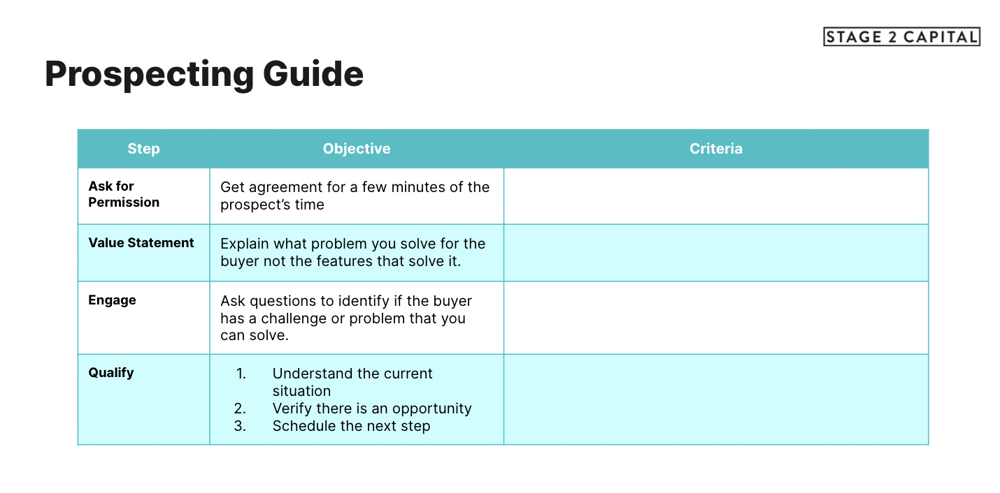
Next, you'll want to put together a discovery guide to help reps identify challenges, highlight how you compare to other solutions, explain how the customer will measure ROI, and clarify the process:
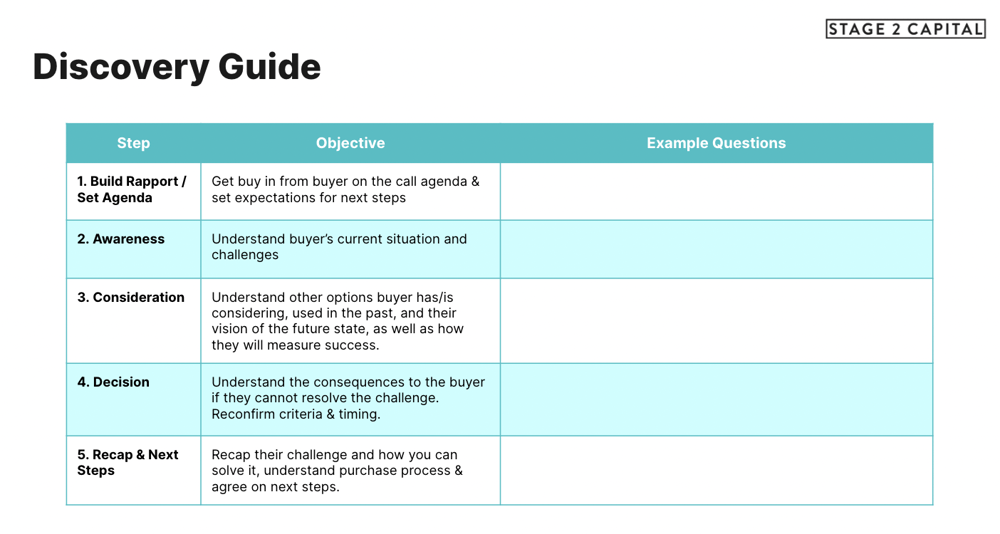
Then, it's time to craft a presentation guide. This will provide reps with a roadmap to customize the presentation/demo and show how you are solving a customer's challenges — not just previewing features. This will ultimately help your customer come to a decision:
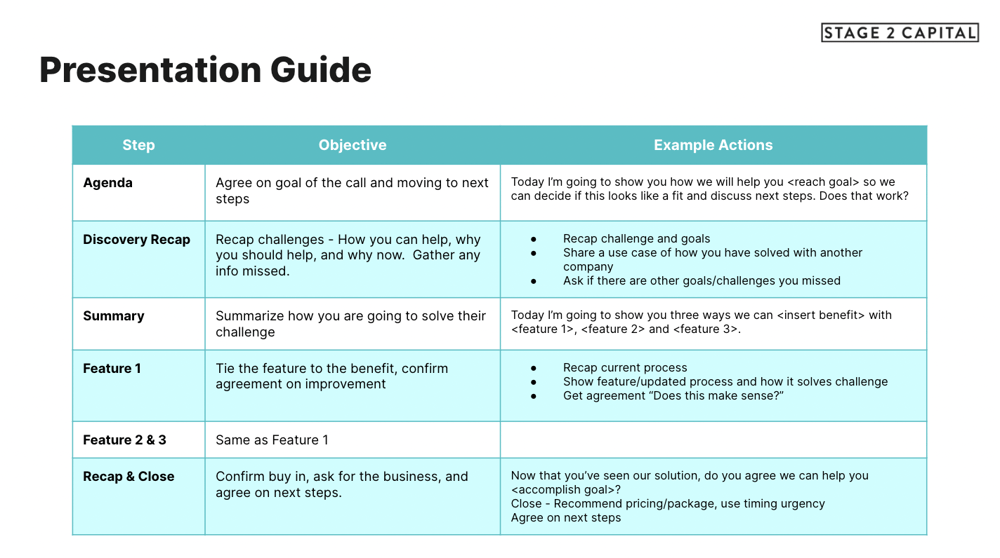
Finally, you can offer a customer success guide that provides the steps to successfully onboarding and activating a customer:
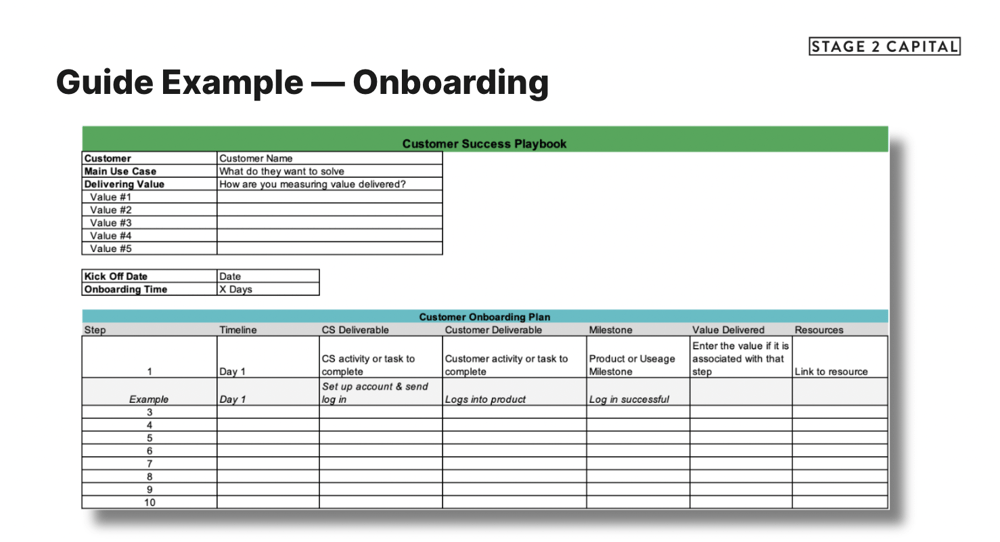
We recommend keeping these in a format that is easy to update (Notion, LMS, etc.) and locate. I share more tips around how to put these guides into action in the video below:
To get these templates for yourself, download our free eBook — 5 Steps to Build Your First GTM Playbook!

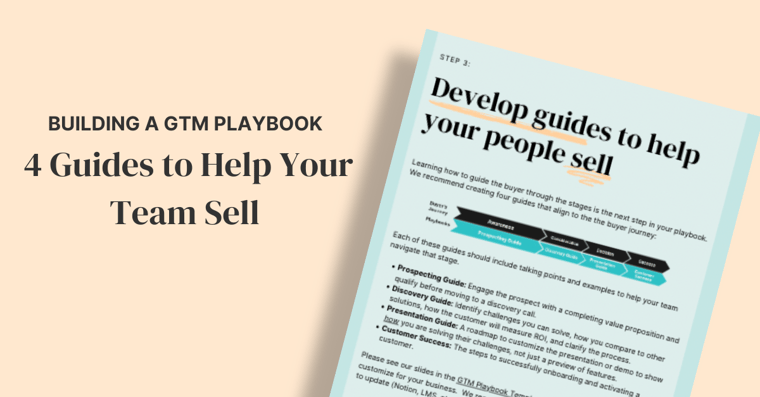
.png?width=1200&height=627&name=GTM%20Playbook%20eBook%20cover%20(1).png)